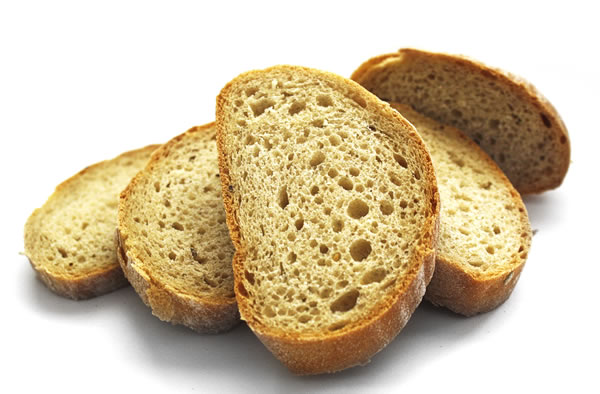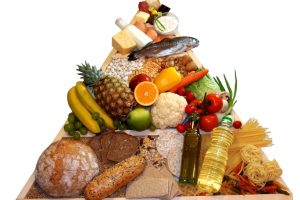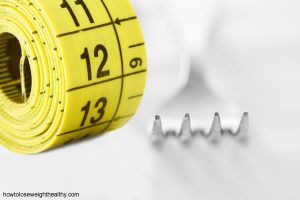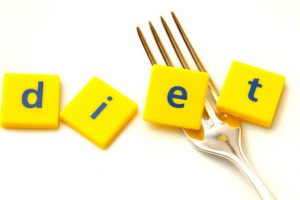Many people are often confused about the role of carbohydrates in a weight loss diet. We got a number of questions from readers asking a very simple question “How many carbs should I eat per day?” In this post we explain in simple terms how to calculate the amount of carbohydrates to consume per day, analyze foods that have a lot of carbs and how to control your daily intake of carbs.
Step 1: Determine your ideal total daily carbs
The amount of carbs you should be eating each day depends on factors like your age, height, weight, sex and activity level. The first step to determining the amount of carbs you should have each day is to determine the amount of calories you should have in a day. Total calories are best determined by a qualified professional but can be estimated semi-accurately by an online calculator that takes into account all of the factors listed above.
The best calculators are based on a scientifically verified mathematical formula like the Mifflin St. Jeor formula and also take into account your daily exercise or activity level. If you are trying to lose weight subtract 300 to 500 calories from that number. Once you have a number or a range for your total daily calories, divide the number by 8. What you get is approximately the total grams of carbohydrates you should consume each day.
- Endurance athletes need more energy from carbohydrates and should divide their daily calories by about 6 instead of 8.
- Individuals who are diabetic should consult a registered dietitian or a physician before making dietary changes.
Step 2: Know your major carb sources
There is nearly an infinity of food products that contribute carbohydrates to the diet, so how do you know which are carb heavy and which are not? Usually you should consult the nutrition label to see how many grams of carbohydrates are in each serving. Pre-packaged foods that are traditionally carb-heavy include snacks such as pretzels, chips, cookies, and candy, but also soda and juice. Yes, even juice.
A true serving of juice is about 4 ounces, or about a quarter of a traditional water bottle. When you have a full glass of orange juice at breakfast you can be loading on the carbs long before you’ve even started your day!
On top of this, many of us get a large portion of carbs from foods that don’t come labeled. These are foods prepared by family, friends, ourselves, or even the local take-out restaurant. Rice, pasta, or bread could be the smoking bullet in these dishes, but surprisingly some vegetables such as peas, potatoes, and corn make the list too. All of these items are very high in carbs and should not make up the bulk of a meal.
Finally, we get to treats. A single candy, chocolate, donut, pastry, or mixed drink can pack a punch where carbs are concerned. Here is where moderation is key and it doesn’t have to be painful. Life is worth living and sweets are a great part of it, but they are better enjoyed when they aren’t accompanied with guilt and health expenses down the line.
Step 3: Splitting per meal
Unless you are an endurance athlete a good general rule is to have 45 to 60 grams of carbs at each meal and 15 to 30 at snacks. If you are on the petite side, for example if you are a shorter female, you want to aim for the 45 and 15. If you have a larger frame and higher daily calories you probably want to go for 60 grams at meals and 30 grams for snacks. It is important to split your carbs up throughout the day and not to have them all at once in a single meal.
When you eat many carbs at once your body stores some in the blood and some in the muscles and liver and everything else gets converted to body fat. It would be great if the body began breaking down fat when you need more energy later in the day, but your body generally drains carbs from your blood, muscles, and liver first leaving you tired and sluggish.
Step 4: Fiber
Fiber is technically a carbohydrate, just not one that our body can use for calories. Fiber instead goes through the digestive system straight to the colon as food for bacteria. It may sound strange, but it is important that these bacteria stay happy. Studies have shown that individuals with healthy intestinal bacteria are often lower in body weight and less at risk for some types of cancer. Also, high fiber foods tend to be healthy for many other reasons and are a good choice for at least half of the carbs in your meal. Good ways to include more fiber include eating oats, whole grain bread or pasta, brown rice, and alternative carbs like quinoa.
Step 5: Added Sugar
If you still have the number for the total calories you should have each day, divide it by 40 and that’s the amount of grams added sugar you should be consuming. Sugar found in fruits is almost exactly the same as the sugar you will get anywhere else, be it high fructose corn syrup or table sugar, except for one important difference: nutrients!
The value for total ADDED sugar is so low because added sugar has no nutritional value other than calories. If you choose to get all of your sugar each day from whole fruits have at it, but if you want to have the chocolate cake or the breakfast donut you should at least be aware of the amount of added sugar and how it factors into your healthy diet.
7 Tips to become aware of carbs in your diet:
- Know your total calories and divide by 8 to get grams carbs
- Aim for 45 to 60 grams carbs for meals
- Aim for 15 to 30 grams carbs for snacks
- Be aware of major carb sources in each meal and try to keep it to about ¼ of your plate.
- Try to have at least half of your carbs from whole grain sources
- Aim for 30 grams fiber each day
- Limit your added sugars to 10% of your daily calories






